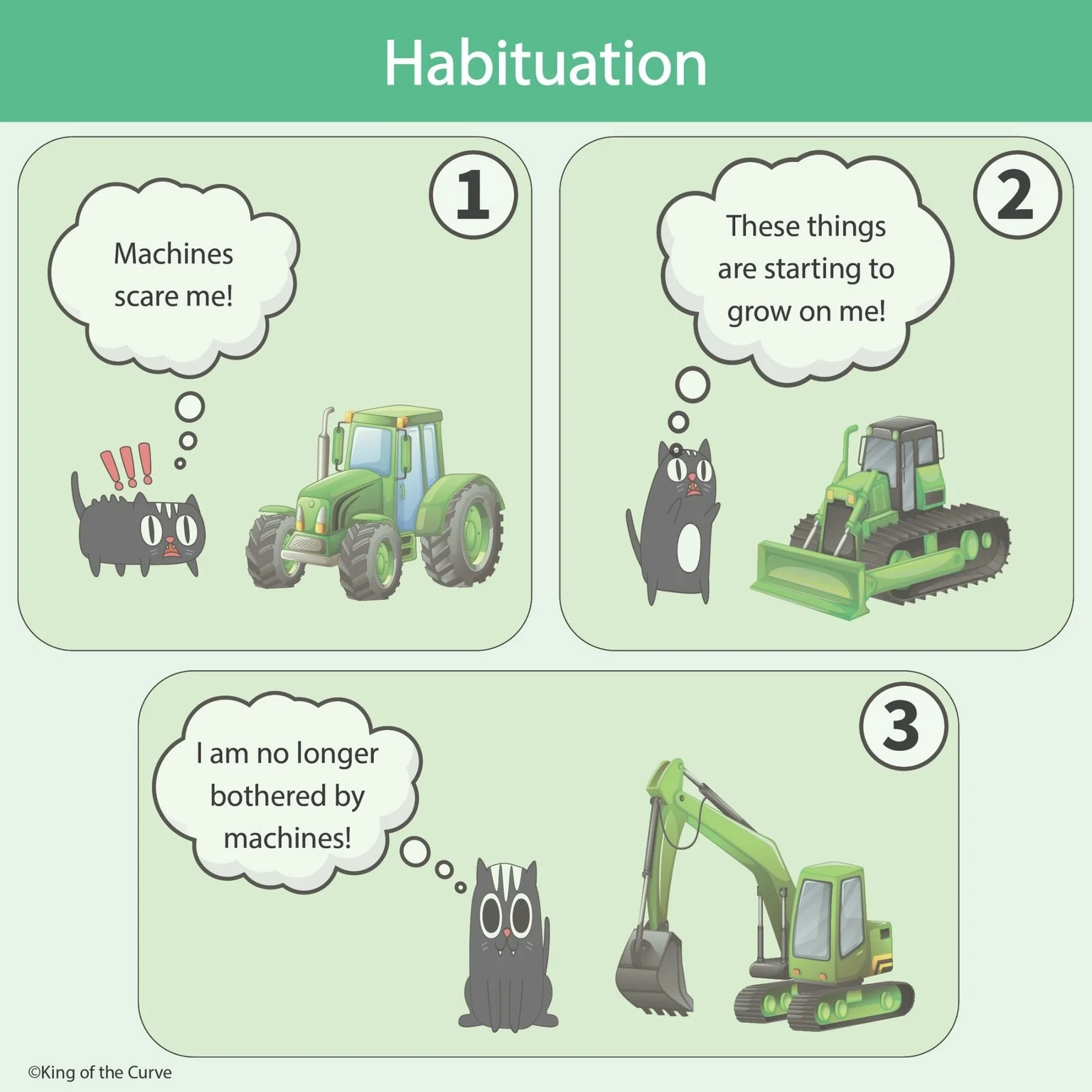🐾 Habituation: Getting Used to a Stimulus (MCAT/NCLEX High-Yield)
Habituation is a classic non-associative learning process: responses to a repeated, harmless stimulus decrease over time. It shows up all the time on the MCAT Psych/Soc and appears on NCLEX in scenarios about patient monitoring, alarms, and desensitization to repeated non-threatening stimuli.
🧠 What is Habituation?
Definition: A decrease in behavioral response after repeated exposure to a benign stimulus.
In the visual: The cat is startled at first, then less concerned, and eventually unfazed by the machines.
Key features
Rapid at first, then plateaus.
Dishabituation: A new stimulus can restore the response to the original one.
Distinct from sensory adaptation (receptor-level) and fatigue (inability to respond).
📊 Look-Alikes at a Glance
| Term | Core Idea | Quick Example | MCAT/NCLEX Angle |
|---|---|---|---|
| Habituation | Response decreases with repeated benign stimulus | Startle to ICU beeps fades over a shift | Non-associative learning; dishabituation resets response |
| Sensitization | Response increases after repeated or intense stimulus | After mild shocks, startle gets stronger | Another non-associative process; opposite trend |
| Extinction | Learned (conditioned) response declines when CS presented without US | Bell rings w/o food → salivation wanes | Associative learning (classical/operant) |
| Systematic Desensitization | Therapy using gradual exposure + relaxation | Stepwise exposure to needles | Clinical technique; not basic learning per se |
🎯 MCAT connections
Appears in passages on startle response, attention, or neural plasticity.
Watch for stems that contrast habituation vs adaptation vs extinction.
If a novel stimulus is introduced and the response returns → dishabituation.
💉 NCLEX tie-ins
Patients and staff may habituate to alarms → safety protocols stress alarm management.
Pediatric or phobia contexts: controlled, repeated exposure reduces fear when the stimulus is safe.
Education: teach families that repeated non-harmful stimuli can reduce anxiety over time.
🧪 Quick Practice
A patient jumps at the infusion pump at 8am but ignores it by noon. What process? → Habituation.
After a loud door slam, the same pump beeps and the patient startles again. What happened? → Dishabituation.
A clinic uses gradual exposure + breathing exercises for needle fear. Name the method. → Systematic desensitization.
🚀 Keep climbing the curve
Try the Question of the Day
Explore more visuals at Study Science
Unlock options at Free Lifetime
New to pre-med? Start with Pre-Med Essentials
Frequently Asked Questions (FAQs)
-
Aim for 4-6 focused hours, ensuring you incorporate breaks to avoid burnout.
-
Practice mindfulness techniques, take practice exams under realistic conditions, and maintain a balanced lifestyle.
-
Set short-term goals, seek support from mentors, and reward yourself for small achievements.
-
Regular exercise improves focus, reduces stress, and enhances overall mental clarity.
-
KOTC offers personalized learning tools, gamification features, and adaptive question banks to help students stay on track without burnout.


